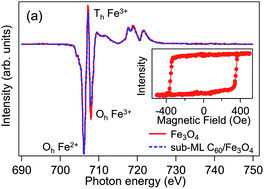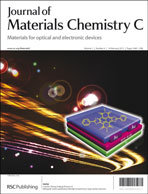Electronic and magnetic structure of C60/Fe3O4(001): a hybrid interface for organic spintronics
Abstract
We report on the electronic and magnetic characterization of the hybrid interface constituted of C60 molecules and an epitaxial Fe3O4(001) surface grown on GaAs(001). Using


 Please wait while we load your content...
Please wait while we load your content...